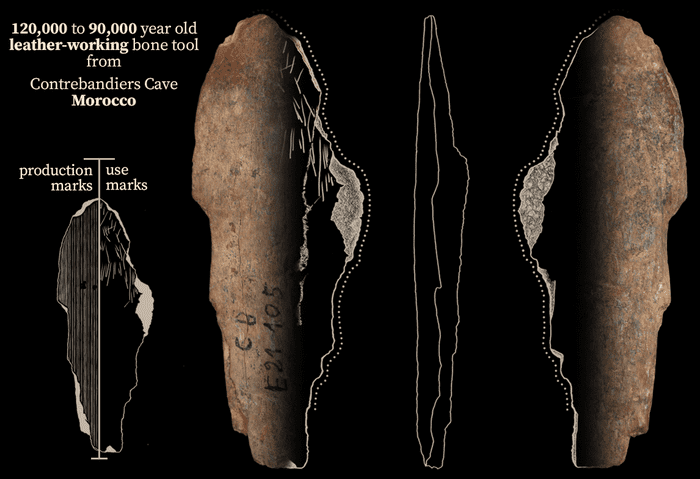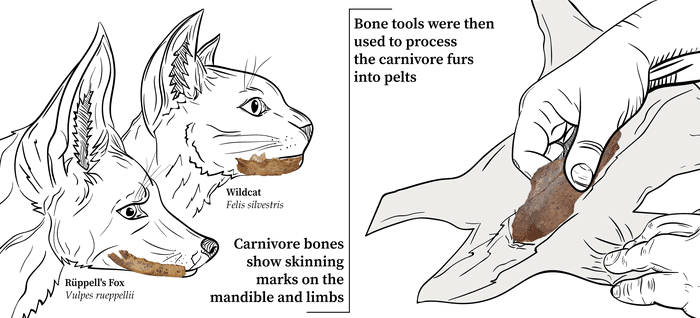
Humans can get pretty weird with their fashion, so much so that it’s easy to forget that clothing is, first and foremost, supposed to be practical and functional. Our bare skin is rather ill-equipped to handle extreme cold, which is why clothes are so important. Without them, humans could have never migrated out of the cozily warm African savanna and survive incomprehensible long cold spells such as ice ages.
The first clothes humans wore were made from naturally available materials such as animal fur and hide, grass, leaves, bone, and shells. It’s not clear when we first starting adorning our skin with clothing, but a new study that found 120,000-year-old clothing manufacturing tools in Contrebandiers Cave on Morocco’s Atlantic Coast suggests this practice is at least that old.
The Pleistocene wardrobe

Researchers led by Emily Hallett of the Max Planck Institute for the Science of Human History in Germany, initially arrived at the cave to examine bone fossils in order to determine what Pleistocene humans in the area ate. What they found instead was far more interesting.
Clothes don’t fossilize, as they decompose and vanish in just a couple hundred years. But the tools used to fashion them are much sturdier. Inside the Moroccan cave, the researchers discovered dozens of tools ideal for scraping hides and pelts to make leather and fur.
“Our findings show that early humans were manufacturing bone tools that were used to prepare skins and furs, and that this behavior is likely part of a larger tradition with earlier examples that have not yet been found,” Hallett says.
Some of the tools included bovid ribs carved into a broad, round-ended shape that is ideal for scraping and removing tissues from leathers and pelts. These tools look remarkably similar to those that craftsmen still employ today to process hides.
In total, the scientists identified 62 different bone tools dated to 90,000 to 120,000 years ago, including a whale tooth that appears to have been used as a flake stone. These tools were already specialized. But early humans must have used cruder tools to process natural when they first started making clothing, so the first clothes likely appear much earlier than this. Previously, researchers sequenced the DNA of lice known to infest clothing and found they appeared about 170,000 years ago.
Alongside the bone tools, the scientists found the remains of sand foxes, golden jackals, and wildcats exhibiting cut marks in patterns resembling those left by skinning. For instance, incisions were found at each of the animal’s four paws, performed to allow the skin to be pulled in one piece from the paws to the head. Ancient cut marks around the animal’s mouth show how Pleistocene humans removed the skin of the head.

The marks left on the bones of these carnivorous animals were not those you’d expect to see due to butchery, suggesting hunter-gathers were only interested in obtaining their hides. On the other hand, other animal remains, including ancient cow-like bovids, showed clear signs that their meat was processed.
The timeline of these bone tools precedes the great migration of humans out of Africa — and it makes sense. Early humans required clothing if they were to survive the trek across frigid Eurasia.
As to how these clothes must have looked like, that’s a mystery. We can only speculate if they were primarily practical to provide protection against the elements or whether they also contained symbolic ornaments.
Hallett and colleagues want to replicate these tools and experimentally manufacture clothes from natural materials available to Pleistocene hunter-gatherers. While undoubtedly fun, the goal is to better understand the kind of time and labor required in this ancient process.


